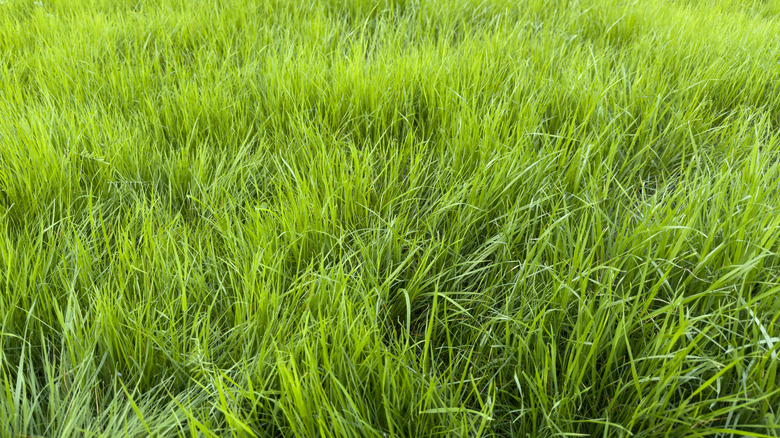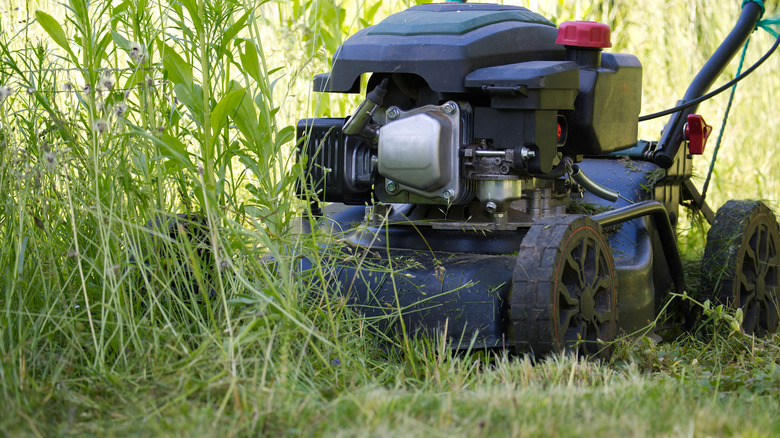How To Mow Extra Long Grass Without Damaging Your Lawn Or Mower
A well-kept lawn is the pride of many homeowners, but keeping it always neatly trimmed requires significant time and effort — depending on where you live, you might have to mow your lawn even two times a week in springtime just to keep it tidy. Whether it's due to a vacation, rainy weather, or just a busy schedule, it's not uncommon to fall behind on your lawn mowing and end up with extra-long grass. When you do get around to handling your overgrown yard, you'll want to make sure you follow some long grass mowing best practices, including double-cutting the overgrown grass and collecting the grass clippings as you mow.
If you just fire up your mower and go in blindly, you could be facing some risks. For one, long grass can damage your mower by clogging the blades and causing overheating. Plus, suddenly over-mowing can stress your lawn, leaving it looking dry and patchy. Luckily, this won't happen if you take some simple precautions, and there might be something you can do to prevent extra-long grass in the first place.
How to mow long grass without unwanted surprises
Though you might think cutting the entire grass length in one go is the most efficient way to mow your lawn, you'll get the best results by doing a double cut. Start by cutting around 50% of the grass height. Then, wait a couple of days while it cools off before going in and cutting another 50% of the new height. If the grass has really run wild and you feel it's not short enough yet, you can give it a third pass a couple of days later.
As you mow, make sure to collect the grass clippings you leave behind, either by catching them in a grass bag if your mower has one or by raking them up and bagging them afterwards. While it's usually a good idea to leave grass clippings on your lawn after mowing, your lawn might not love it if the grass is too long. That's because extra-long blades create large clumps that can smother new grass shoots and prevent their growth, damaging your lawn's health.
And if you'd like your long grass mowing adventure to remain a one-time thing, consider giving growth regulators a try. This solution redirects grass growth downward and sideways, helping homeowners enjoy a well-deserved mowing break of up to two weeks.

